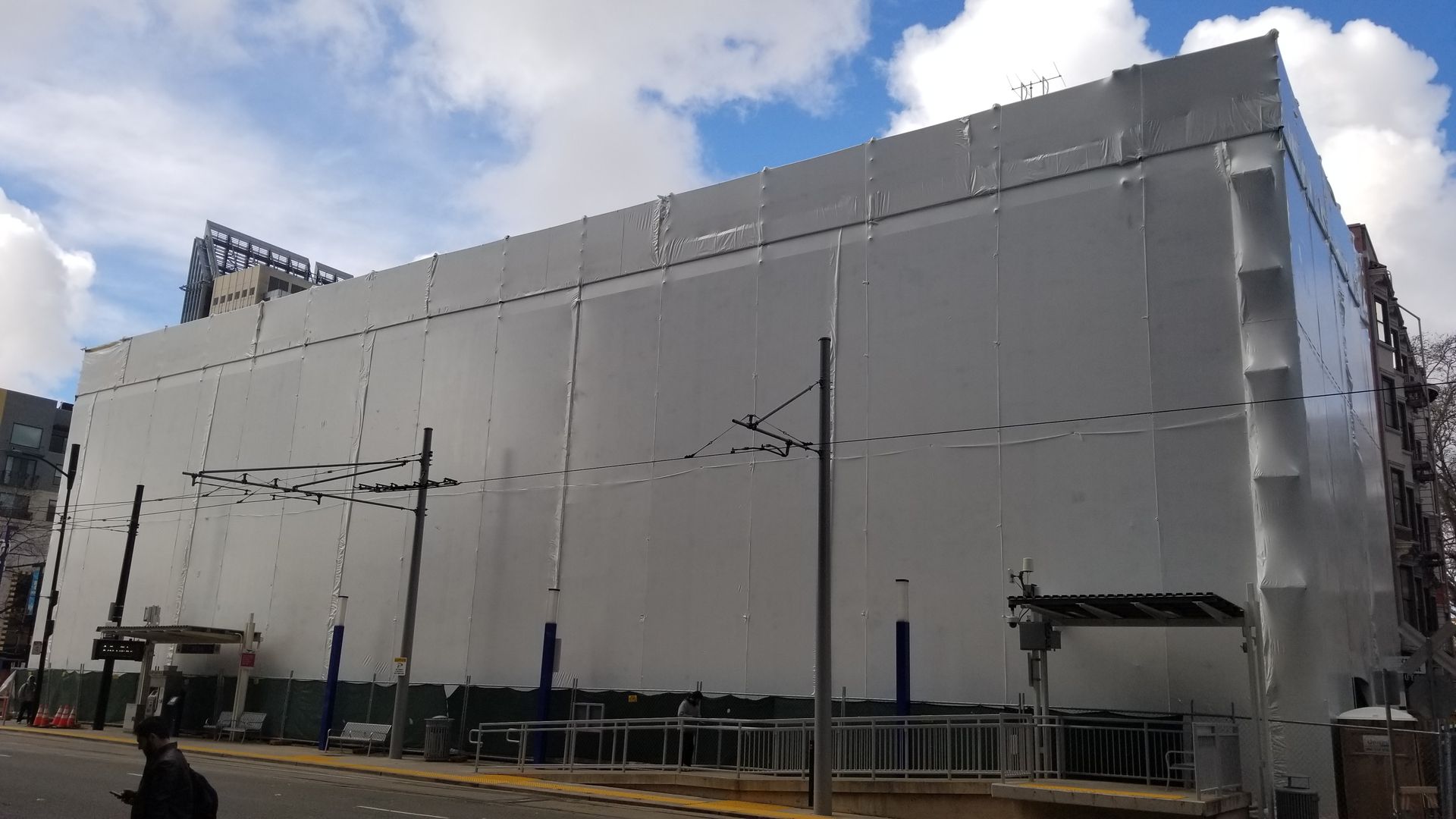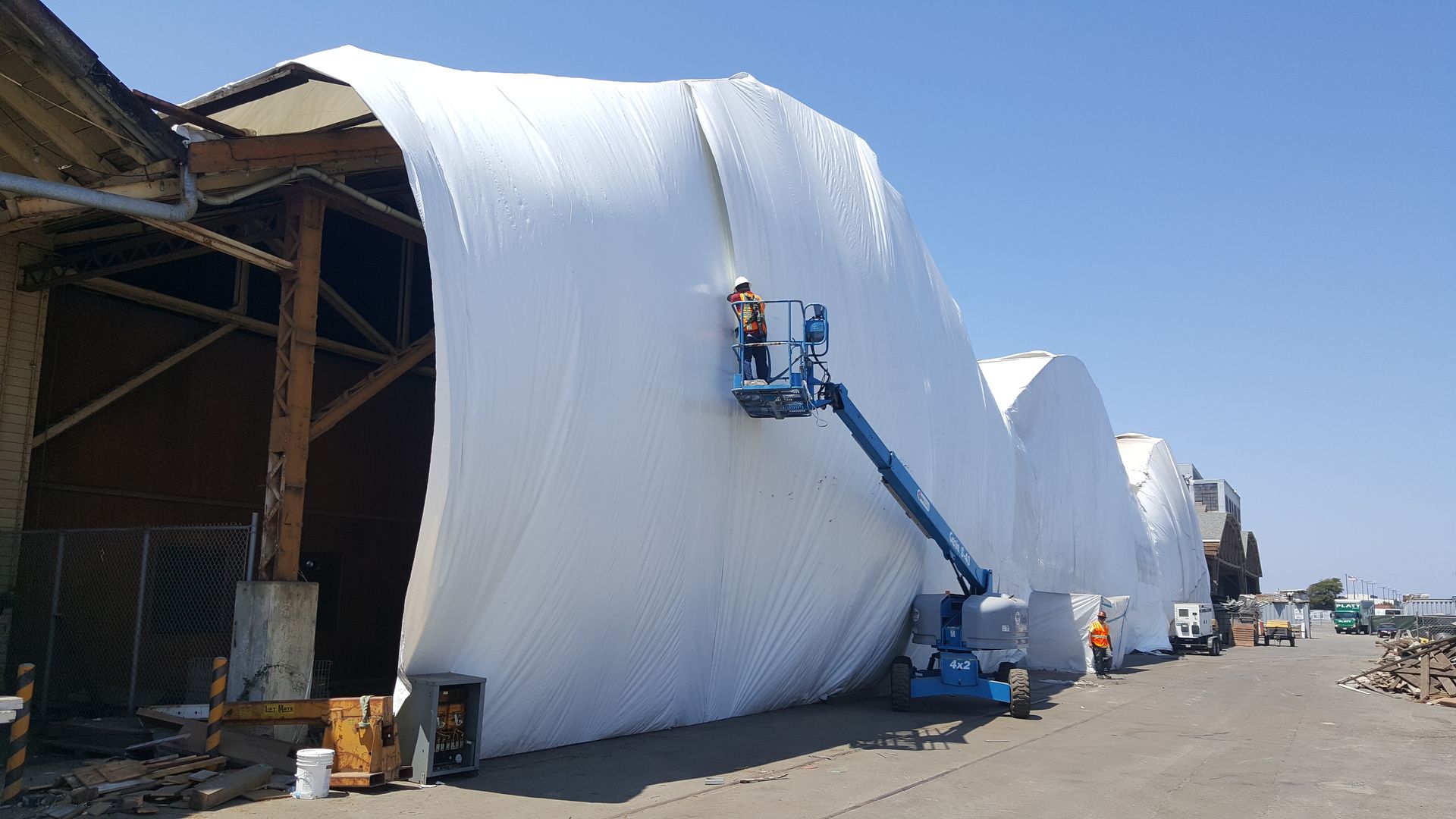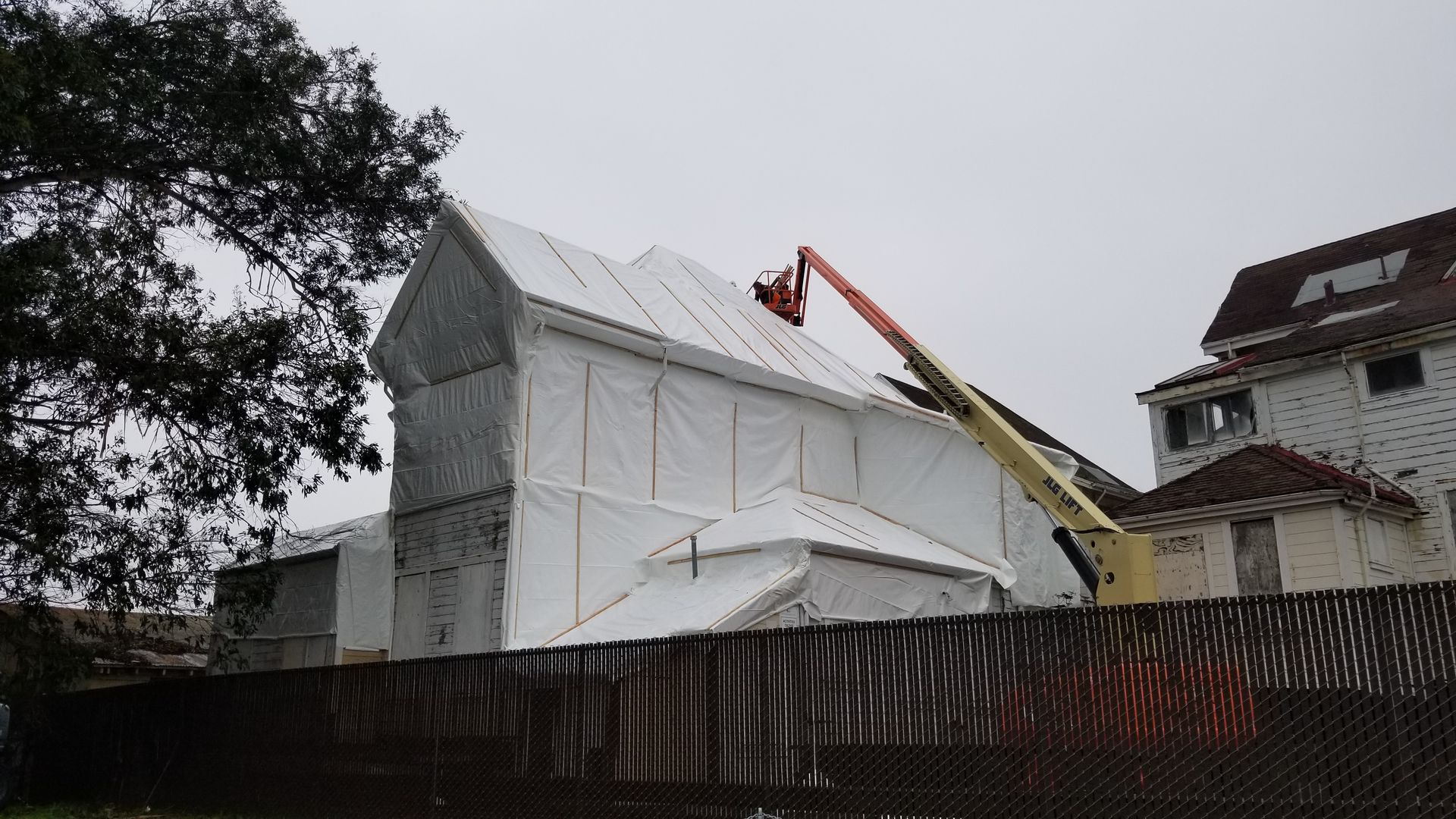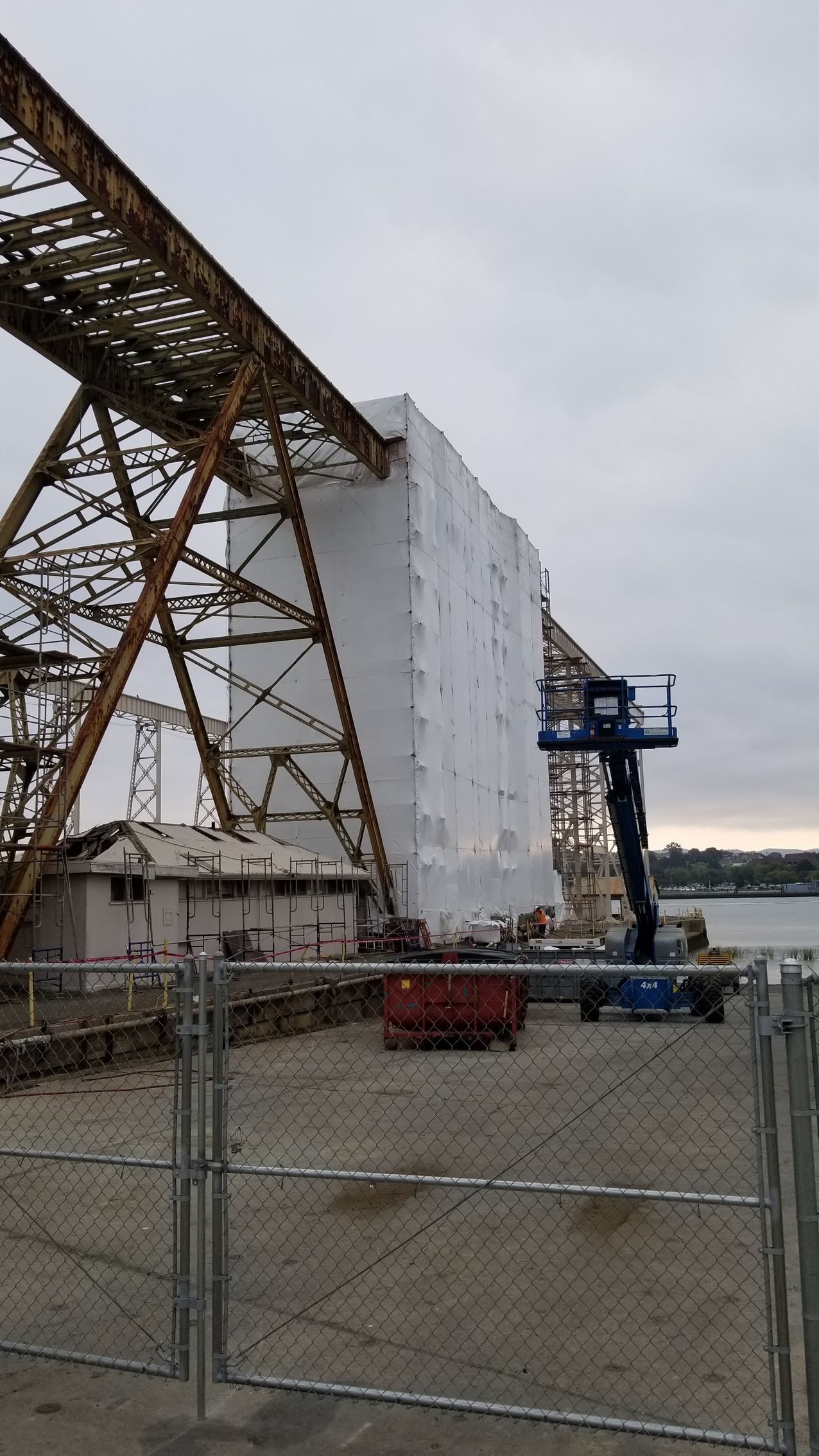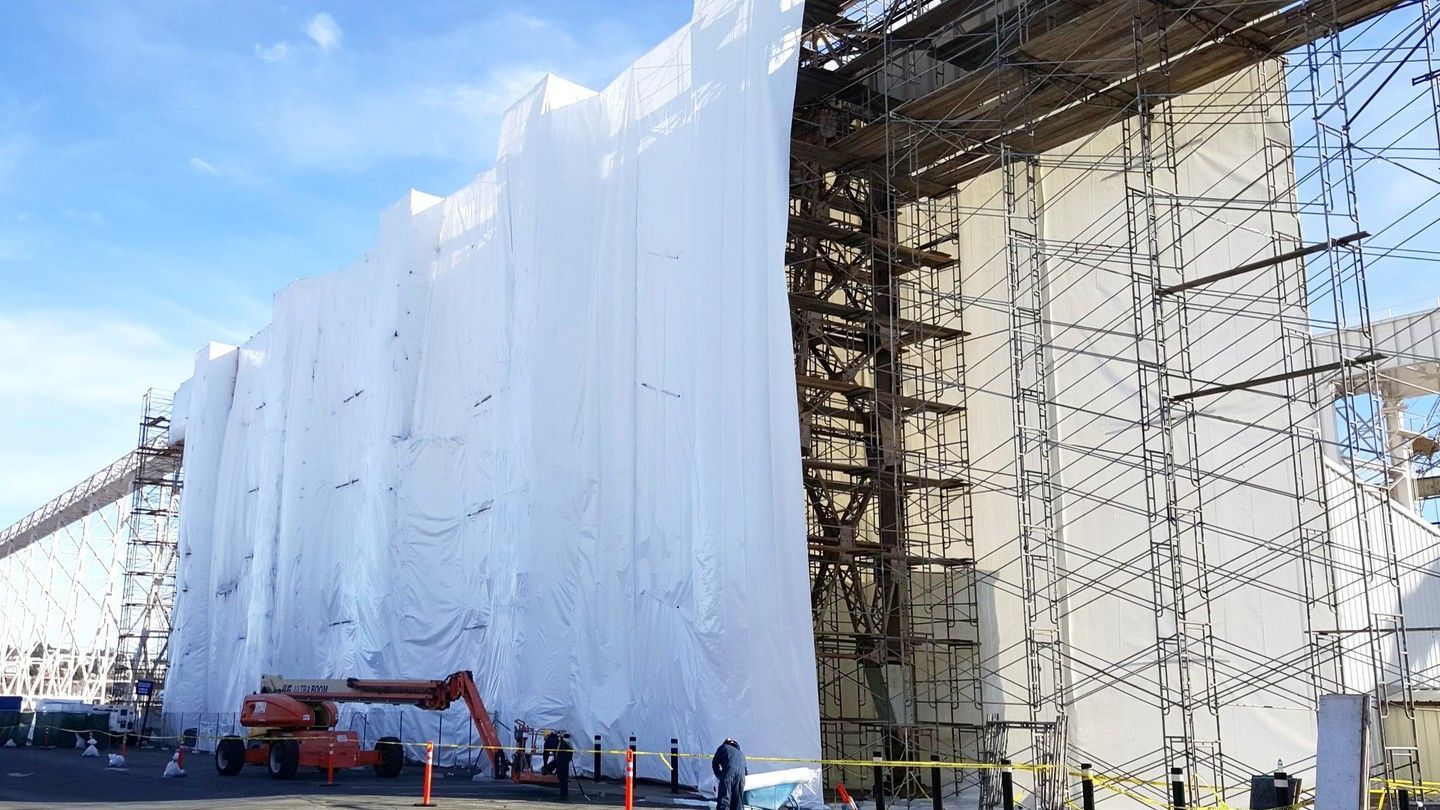Containment Setup
Removing the danger, restoring the safety!
There is no containment too big or small for us to handle. We specialize in a vast array of large, full building or scaffolding shrink wrapping to specific infection control systems. We can custom engineer any containment needs to fit any area including full building, scaffolding, doors, hallways, rooms or just isolate selected areas. Our customers have come to rely on our experience and expertise to efficiently provide you with effective containment setup environments. We are trained and licensed to handle all type of hazardous and non-hazardous materials.
Ideal for:
Full Buildings and or Scaffolding Systems
These containments are perfect for protecting your project from the elements, minimizing visibility and securing the site from dust and debris going where you don’t want.
Selective Containments
These are used to cover and protect interior elements as to keep them clean and safe throughout a project.
Steel Track with Coroplast or Sheetrock
Perfect for those longer projects that need barriers that will look good and be resilient for heavy foot traffic.
Infection Control
Primarily used for hospitals, clean or server rooms to ensure the work site is completely isolated from the rest of the facility. They come with an array of installation options including HEPA negative air filtration, view windows, sticky mats, zippers and manometer to show filtration air pressure.
-
City skyline
Photo By: John DoeButton
What does it involve?
The process of containment setup typically involves several steps:
Plan and design the containment area: Determine the size and layout of the area to be contained, taking into consideration the type and amount of hazardous materials involved, as well as any regulatory requirements.
Prepare the work area: Clear the area of debris and any other obstacles, and make sure that the work area is ready for containment setup.
Install the containment barrier: Use materials such as plastic sheeting, tarps, or other materials to create a physical barrier around the work area. Seal all seams and openings to prevent the release of hazardous materials.
Install the ventilation system: Set up a ventilation system to ensure that any airborne contaminants are safely removed from the work area. This may involve the use of fans, HEPA filters, or other equipment.
Establish entry and exit points: Set up entry and exit points to allow workers to enter and exit the containment area safely. These points should be equipped with decontamination equipment such as airlocks, showers, and other necessary equipment.
Monitor the containment area: Regularly monitor the containment area to ensure that the barrier and ventilation systems are working properly, and that there are no breaches or leaks in the containment system.
Dismantle the containment area: After the work is complete, carefully dismantle the containment area to prevent the release of any hazardous materials, and properly dispose of any materials used in the containment setup.
How does it work?
Containment setup involves creating a physical barrier and ventilation system to prevent the spread of hazardous materials during construction, demolition, or remediation activities. Proper containment setup requires careful planning, design, and monitoring to ensure that workers, the public, and the environment are protected from exposure to hazardous materials.

